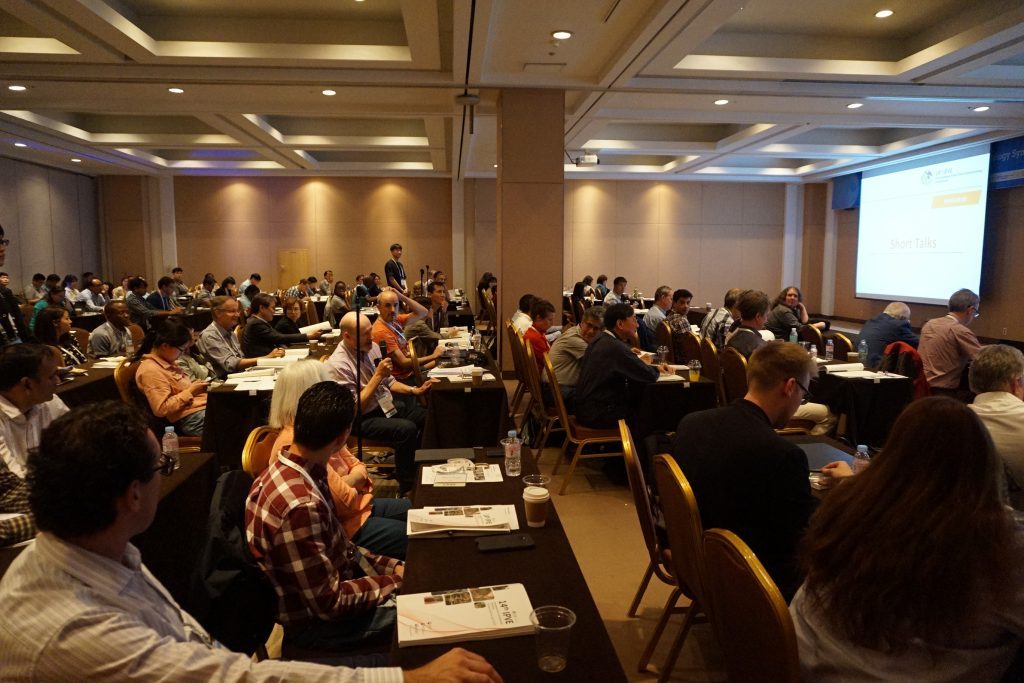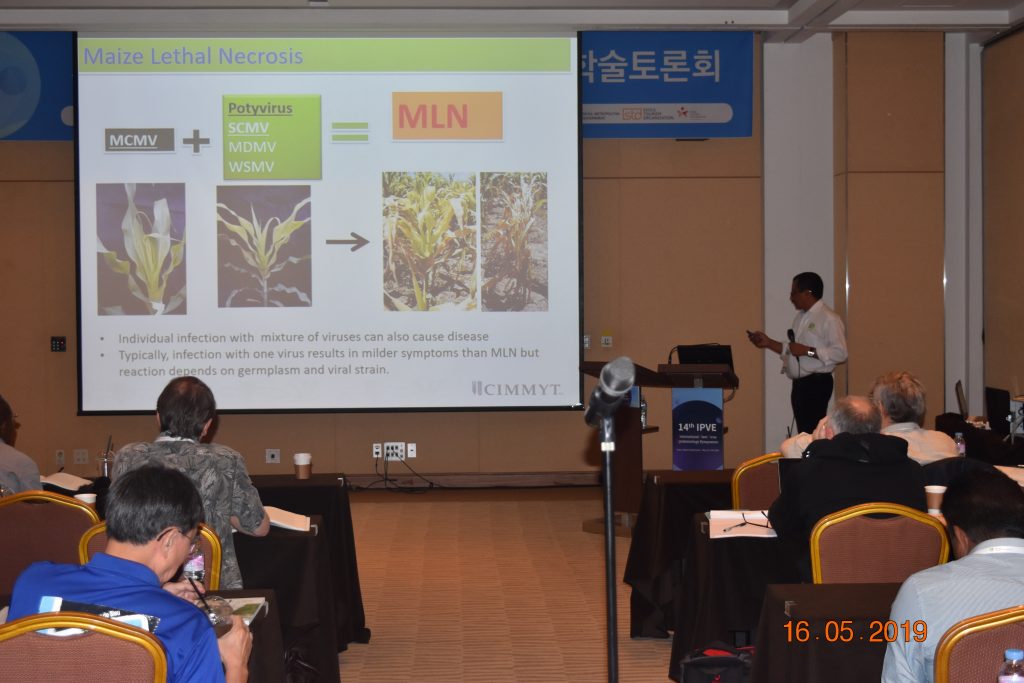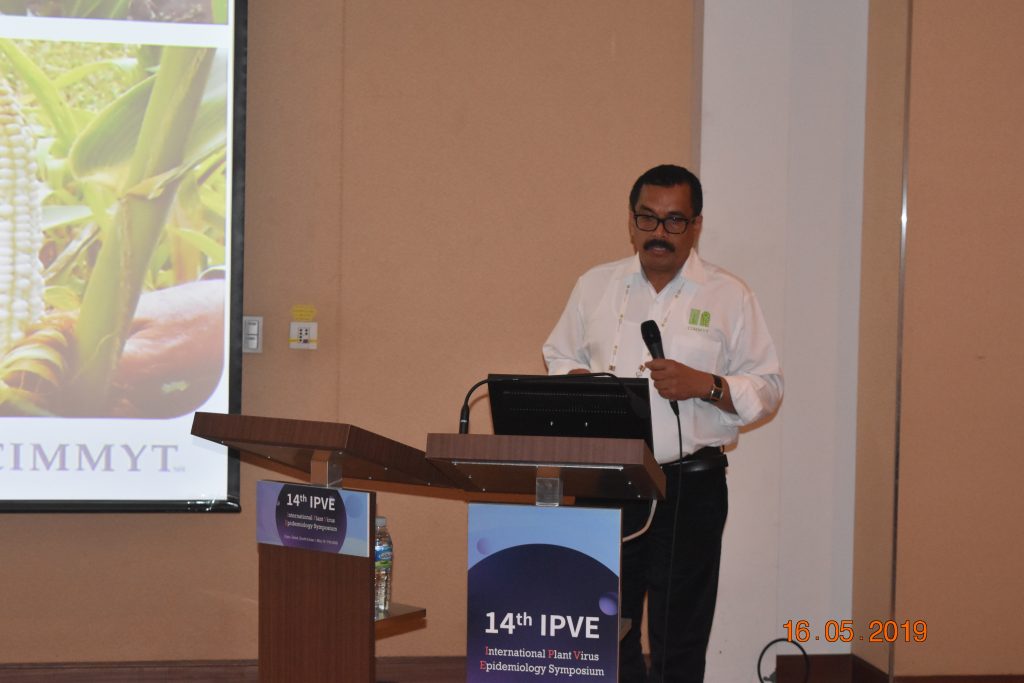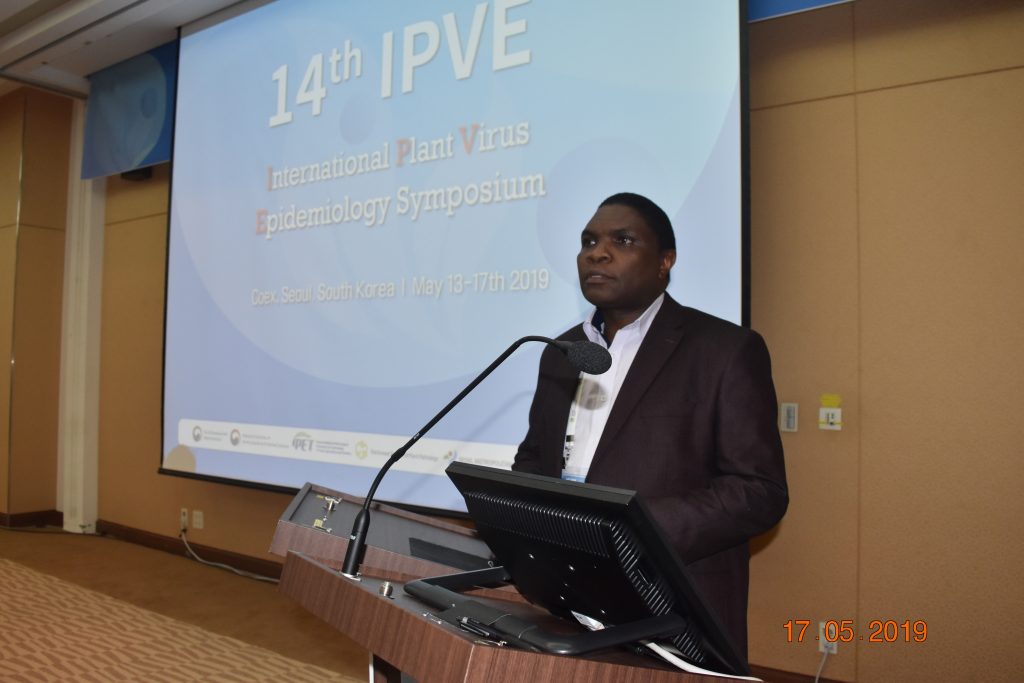CIMMYT Scientists presenting progress on MLN at 14th International Plant Viruses Epidemiology (PVE) Symposium, Seoul Korea ( 13th – 17th May 2019)

Delegates participating in technical session during the International conference
Dr. Suresh,L.M. and Francis Mwatuni : The IPVE2019 symposium had a total of 123 participants from 33 countries. The symposium consisted of 12 important keynote speeches, 53 oral presentations, and 60 poster presentations. This year’s IPVE symposium lectures and presentation provided very valuable research information regarding recent plant virus epidemiology from all corners of the world.
Dr. Suresh, L.M. presented on the topic “Tackling Maize Lethal Necrosis (MLN), a complex disease in Eastern Africa“
Abstract : Maize (Zea mays L.) is the most important cereal crop in sub-Saharan Africa (SSA), covering over 35 million ha, largely in smallholder farming systems that produce over 70 million metric tons (MMT) of grain. Maize Lethal Necrosis (MLN) disease first appeared in Kenya in 2011, and became a major threat to maize production in eastern Africa in subsequent years. In eastern Africa, MLN is caused mainly by synergistic interaction between two viruses, Maize Chlorotic Mottle Virus (MCMV) and Sugarcane Mosaic Virus (SCMV). MLN can cause up to 100% yield loss in susceptible maize varieties. The disease poses a complex challenge as the MLN-causing viruses are transmitted by insect vectors, and also through contamination of the seed, especially by MCMV. CIMMYT implemented a multipronged strategy in partnership with several international and national partners to tackle the MLN challenge. These efforts included: a) establishing a state-of-the-art MLN Screening Facility in partnership with Kenya Agriculture and Livestock Research Organization (KALRO) in Naivasha for identifying sources of resistance to MLN, MCMV and SCMV under artificial inoculation; b) accelerated breeding and deployment of MLN-tolerant/resistant maize varieties with other relevant traits preferred by African smallholders; c) creating awareness among the maize seed sector institutions on SOPs for producing and exchanging MLN-free commercial seed; d) disseminating information on farming practices for minimizing MLN incidence; e) establishing an MLN Phytosanitary Community of Practice involving various stakeholders, including national plant protection organizations (NPPOs), seed companies, regional/sub-regional organizations, etc.; and f) probing the epidemiology of the disease, especially the factors underlying seed contamination by MCMV. These comprehensive efforts have led not only in preventing the further spread of MLN into other major maize-growing countries in sub-Saharan Africa, especially southern and West Africa, but also minimized the incidence of the disease in the MLN-endemic countries in eastern Africa.
Presentation outlines :
- MLN disease
- Tackling the MLN challenge
- Disease resistance breeding program
- Safe seed movement with effective quarantine measures
- MLN diagnosis and surveillance
- Capacity Building to Partners on disease diagnosis and surveillance
- MLN pathogen-free commercial seed production and exchange
- MLN Information Portal
- Community of practice
The presentation was well received during the conference with a good understanding on how the efforts are made to tackle the MLN in eastern Africa.
Mr. Francis Mwatuni gave a presentation on a topic “Checking the spread of Maize Lethal Necrosis (MLN) using modern Surveillance and diagnostics tools in Sub-Saharan Africa” This topic was well in line with one of the themes of the symposium; “Diagnostics and surveillance”. The talk highlighted the efforts being done under the MLN Diagnostics and Management training on;
- Effective MLN field and seed surveillance using the ODK digital tool in the 8 Sub Saharan countries where the project is being implemented
- Use of affordable, reliable and user-friendly diagnostics options for MLN which have been developed and optimized by CIMMYT
- Management of MLN surveillance data/information from the surveillance program in the MLN Data management tool, The MLN ToolBox
- Effective Dissemination of the surveillance information to the public after publishing by partner country NPPOs through the MLN Web portal
- Outlined the efforts being done to reduce MLN infection, transmission and contamination of commercial seedlots from Seed companies in the region
- The role of the Community of Practice in mitigating the effects of MLN in SSA.
The talk was an eye opener to many participants from other parts of the world who expressed interest in collaborating with CIMMYT and other partners to offer any technical assistance in surveillance, diagnostics and epidemiology studies on the MLN causing viruses.
Trackback from your site.



